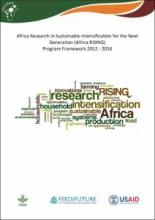/ library resources
Showing items 1 through 9 of 56.Few regions present bigger development challenges than the African drylands – home to nearly 300 million people, and the vast majority of Africa’s poor. Food security and rural welfare in these areas are limited by a range of factors, biophysical, socio-economic and policy-related.
En marge de l’Assemblée Générale de la Fédération des Géomètres Francophones (FGF), ONU-Habitat et le Réseau Mondial des Instruments Fonciers (GLTN), a organisé une séance de formation sur la bonne gouvernance foncière.
Across Africa, land is integral to identity and existence. Access to, and ownership of land for women is often problematic – particularly when laws and culture collide.
Eco-toilets (human urine and faecal matter collected separately) are one of the best ways to solve sanitation problem, and this practice also improves the environment and increases the food production.
L’agriculture contribue à environ 40 % du PIB et assure emplois et revenus à 86 % des Burkinabé. La forte dépendance des populations rurales vis-à-vis de l’agriculture non irriguée, accentue leur vulnérabilité aux changements climatiques.
This paper examines the water dimensions of recent large-scale land acquisitions for biofuel production in the Ashanti, Brong-Ahafo and Northern regions of Ghana.
Strategies for increasing the development and use of groundwater for agriculture over much of Sub-Saharan Africa (SSA) are urgently needed.
Pagination
Land Library Search
Through our robust search engine, you can search for any item of the over 73,000 highly curated resources in the Land Library.
If you would like to find an overview of what is possible, feel free to peruse the Search Guide.







